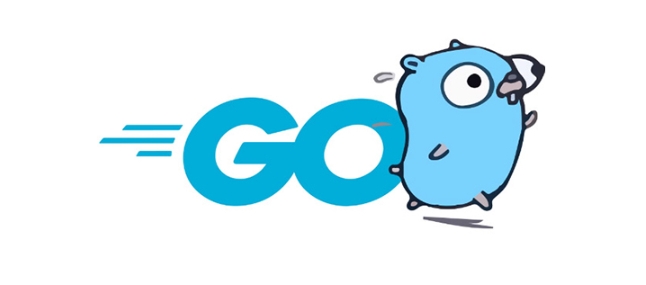Type assertion in Go checks if an interface holds a specific type and retrieves its value. It uses the syntax value.(T), where value is an interface and T is the target type. If the type matches, it returns the value; otherwise, it panics. To prevent panics, use the comma-ok form: s, ok := i.(string). Commonly used with interface{} variables, type assertions are useful for JSON processing, generic functions, and debugging, but shouldn't be overused. Best practices include using the comma-ok idiom, preferring type switches for multiple types, and understanding that assertions only work on concrete types. Example of a type switch: switch v := i.(type) { case string: ... }. Type assertions provide flexibility but require careful handling for safe and maintainable code.

Type assertion in Go is a way to check if an interface value holds a specific type, and to get the underlying value of that type. It's commonly used when you're working with variables of type interface{} and you need to access their actual concrete type.

How Type Assertion Works
At its core, a type assertion looks like this:
value.(T)
Here, value is an interface, and T is the type you’re asserting it to be. If the value inside the interface is of type T, it returns that value. If not, it panics.

For example:
var i interface{} = "hello"
s := i.(string)
fmt.Println(s) // prints: helloBut if you try:

i := 42 s := i.(string)
This will cause a panic because 42 is an integer, not a string.
To avoid panics, you can use the comma-ok idiom:
s, ok := i.(string)
If the assertion is valid, ok becomes true; otherwise, false, and no panic happens.
When to Use Type Assertions
You typically use type assertions when dealing with interfaces that could hold multiple types. For instance, if you have a function that accepts an interface{} and needs to behave differently based on the actual type.
Common scenarios include:
- Processing values from JSON unmarshaling (where data might come as
map[string]interface{}) - Writing generic functions that handle different types differently
- Debugging or inspecting unknown values
Just remember: overusing type assertions may suggest a design that's too loosely typed — which can make code harder to maintain.
Best Practices for Using Type Assertions
Here are some practical tips:
- ? Always use the comma-ok form unless you're absolutely sure of the type.
- ? Avoid excessive type assertions — consider using type switches instead for cleaner handling of multiple types.
- ? Understand that type assertions only work on concrete types. You can't assert an interface to another interface unless the underlying type implements it.
- ? Use them mainly when you have control over possible input types, such as in internal logic or plugins.
Example of a type switch:
switch v := i.(type) {
case string:
fmt.Println("It's a string:", v)
case int:
fmt.Println("It's an int:", v)
default:
fmt.Println("Unknown type")
}This is often more readable than repeated assertions.
So yeah, type assertion is one of those features in Go that gives you flexibility but requires careful handling. It’s useful, especially when working with interfaces, but shouldn’t be your first tool for every job. Basically, just know what you’re pulling out and how to do it safely.
The above is the detailed content of What is type assertion in Go?. For more information, please follow other related articles on the PHP Chinese website!

Hot AI Tools

Undress AI Tool
Undress images for free

Undresser.AI Undress
AI-powered app for creating realistic nude photos

AI Clothes Remover
Online AI tool for removing clothes from photos.

Clothoff.io
AI clothes remover

Video Face Swap
Swap faces in any video effortlessly with our completely free AI face swap tool!

Hot Article

Hot Tools

Notepad++7.3.1
Easy-to-use and free code editor

SublimeText3 Chinese version
Chinese version, very easy to use

Zend Studio 13.0.1
Powerful PHP integrated development environment

Dreamweaver CS6
Visual web development tools

SublimeText3 Mac version
God-level code editing software (SublimeText3)

Hot Topics
 How do I call a method on a struct instance in Go?
Jun 24, 2025 pm 03:17 PM
How do I call a method on a struct instance in Go?
Jun 24, 2025 pm 03:17 PM
In Go language, calling a structure method requires first defining the structure and the method that binds the receiver, and accessing it using a point number. After defining the structure Rectangle, the method can be declared through the value receiver or the pointer receiver; 1. Use the value receiver such as func(rRectangle)Area()int and directly call it through rect.Area(); 2. If you need to modify the structure, use the pointer receiver such as func(r*Rectangle)SetWidth(...), and Go will automatically handle the conversion of pointers and values; 3. When embedding the structure, the method of embedded structure will be improved, and it can be called directly through the outer structure; 4. Go does not need to force use getter/setter,
 What are interfaces in Go, and how do I define them?
Jun 22, 2025 pm 03:41 PM
What are interfaces in Go, and how do I define them?
Jun 22, 2025 pm 03:41 PM
In Go, an interface is a type that defines behavior without specifying implementation. An interface consists of method signatures, and any type that implements these methods automatically satisfy the interface. For example, if you define a Speaker interface that contains the Speak() method, all types that implement the method can be considered Speaker. Interfaces are suitable for writing common functions, abstract implementation details, and using mock objects in testing. Defining an interface uses the interface keyword and lists method signatures, without explicitly declaring the type to implement the interface. Common use cases include logs, formatting, abstractions of different databases or services, and notification systems. For example, both Dog and Robot types can implement Speak methods and pass them to the same Anno
 How do I use the time package to work with time and durations in Go?
Jun 23, 2025 pm 11:21 PM
How do I use the time package to work with time and durations in Go?
Jun 23, 2025 pm 11:21 PM
Go's time package provides functions for processing time and duration, including obtaining the current time, formatting date, calculating time difference, processing time zone, scheduling and sleeping operations. To get the current time, use time.Now() to get the Time structure, and you can extract specific time information through Year(), Month(), Day() and other methods; use Format("2006-01-0215:04:05") to format the time string; when calculating the time difference, use Sub() or Since() to obtain the Duration object, and then convert it into the corresponding unit through Seconds(), Minutes(), and Hours();
 How do I use if statements to execute code based on conditions in Go?
Jun 23, 2025 pm 07:02 PM
How do I use if statements to execute code based on conditions in Go?
Jun 23, 2025 pm 07:02 PM
InGo,ifstatementsexecutecodebasedonconditions.1.Basicstructurerunsablockifaconditionistrue,e.g.,ifx>10{...}.2.Elseclausehandlesfalseconditions,e.g.,else{...}.3.Elseifchainsmultipleconditions,e.g.,elseifx==10{...}.4.Variableinitializationinsideif,l
 How does Go support concurrency?
Jun 23, 2025 pm 12:37 PM
How does Go support concurrency?
Jun 23, 2025 pm 12:37 PM
Gohandlesconcurrencyusinggoroutinesandchannels.1.GoroutinesarelightweightfunctionsmanagedbytheGoruntime,enablingthousandstorunconcurrentlywithminimalresourceuse.2.Channelsprovidesafecommunicationbetweengoroutines,allowingvaluestobesentandreceivedinas
 What is the switch statement in Go, and how does it work?
Jun 23, 2025 pm 12:25 PM
What is the switch statement in Go, and how does it work?
Jun 23, 2025 pm 12:25 PM
A switch statement in Go is a control flow tool that executes different code blocks based on the value of a variable or expression. 1. Switch executes corresponding logic by matching cases, and does not support the default fall-through; 2. The conditions can be omitted and Boolean expressions are used as case judgment; 3. A case can contain multiple values, separated by commas; 4. Support type judgment (typeswitch), which is used to dynamically check the underlying types of interface variables. This makes switch easier and more efficient than long chain if-else when dealing with multi-condition branches, value grouping and type checking.
 How do I use bitwise operators in Go (&, |, ^, &, )?
Jun 23, 2025 pm 01:57 PM
How do I use bitwise operators in Go (&, |, ^, &, )?
Jun 23, 2025 pm 01:57 PM
Use bit operators to operate specific bits of integers in Go language, suitable for processing flag bits, underlying data, or optimization operations. 1. Use & (bit-wise) to check whether a specific bit is set; 2. Use
 How do I use the Lock() and Unlock() methods to protect a critical section of code in Go?
Jun 23, 2025 pm 08:37 PM
How do I use the Lock() and Unlock() methods to protect a critical section of code in Go?
Jun 23, 2025 pm 08:37 PM
The standard way to protect critical areas in Go is to use the Lock() and Unlock() methods of sync.Mutex. 1. Declare a mutex and use it with the data to be protected; 2. Call Lock() before entering the critical area to ensure that only one goroutine can access the shared resources; 3. Use deferUnlock() to ensure that the lock is always released to avoid deadlocks; 4. Try to shorten operations in the critical area to improve performance; 5. For scenarios where more reads and less writes, sync.RWMutex should be used, read operations through RLock()/RUnlock(), and write operations through Lock()/Unlock() to improve concurrency efficiency.






